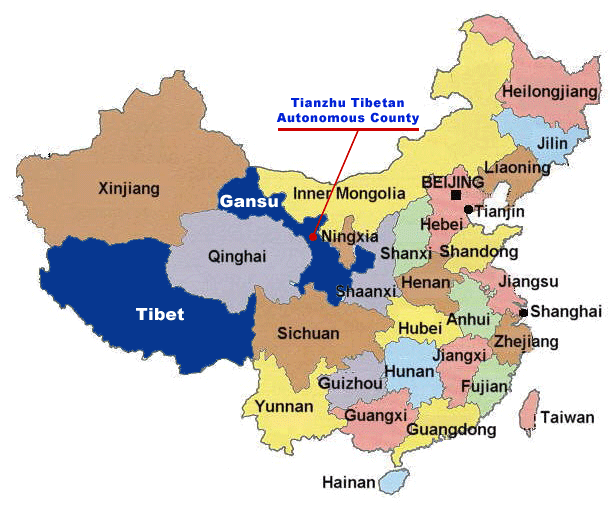 Published: January 23, 2010
Published: January 23, 2010
By EDWARD WONG
BEIJING — China’s top leaders laid out a strategy last week for bringing “leapfrog development and lasting stability” to the Tibetan regions, the state news agency reported late Friday.
President Hu Jintao and other leaders at a Tibet planning conference decided that “more efforts must be made to greatly improve living standards of the people in Tibet, as well as ethnic unity and stability,” the Xinhua news agency reported.
The emphasis on economic development indicates that Chinese leaders still see the solution to the problem of Tibet as one of supplying creature comforts. If the region can develop fast enough, the reasoning goes, then Tibetans will buy into Chinese rule.
But a vast uprising among Tibetans in 2008 and continuing tensions since have shown that even though the region’s economy has been growing quickly for years, many Tibetans still feel economically disadvantaged and culturally threatened. In private conversations, Tibetans often express rage over the suppression of traditional Buddhist practice and over the influx of ethnic Han migrants to Tibetan areas.
Tibet remains a point of contention between China and the United States. Tensions are expected to deepen because President Obama has said he will meet with the Dalai Lama, the Tibetan spiritual leader, early this year.
The Chinese government has invested $45.6 billion in Tibet since 2001, according to Xinhua. Tibet’s gross domestic product, estimated to be $6.4 billion last year, has increased 170 percent since 2000, the agency said. Xinhua reported that the average income of Tibetan farmers and herders was expected to match the national level by 2020.
Despite those numbers, ethnic nationalism remains a potent sentiment across almost all Tibetan areas of China. At the conference, which ran from Monday to Wednesday, senior leaders not only laid out policy for central Tibet, the area China designates as the Tibet Autonomous Region, but also drew up plans to develop ethnic Tibetan areas in the provinces of Sichuan, Yunnan, Gansu and Qinghai.
Tibetans in those eastern regions also took part in the 2008 protests. Until then, Chinese policies there had been more relaxed than those in central Tibet. But the meeting indicated that Chinese leaders could now be ready to make those regions follow the hard-line policies of the Tibet Autonomous Region.
Indeed, parts of eastern Tibet have been governed with an iron grip since the uprising. Last spring, during the anniversary of a 1959 Tibetan rebellion, Chinese officials closed off huge areas to foreigners and flooded rebellious towns and villages with security forces, effectively putting those areas under martial law. Centers of protest in 2008, like the Labrang Monastery in Xiahe, were locked down for months.
In March 2008, riots and protests broke out first in Lhasa, Tibet’s capital, then throughout other Tibetan areas, as Tibetans turned on the Han, the dominant ethnic group in China. At least 19 people were killed in Lhasa, most of them Han, the Chinese government said; Tibetan rights groups said scores of Tibetans were killed by security forces and many more detained. The uprising was the largest ethnic rebellion in China in decades.
China blamed the Dalai Lama, who lives in exile in India, for the uprising and accuses him of being a “splittist.” The Dalai Lama has denied involvement and has said he wants only true autonomy for Tibet, not independence.
At the meeting last week, Mr. Hu said, “Tibet faces a special contradiction between people of all ethnic groups and the separatist forces led by the Dalai clique,” according to Xinhua.
A sign of the importance of the conference was the attendee list: besides Mr. Hu, it included Wen Jiabao, the prime minister; Xi Jinping, the vice president who is the favorite to succeed Mr. Hu; and Li Keqiang, Mr. Xi’s main rival for the top leadership position in China.
A version of this article appeared in print on January 24, 2010, on page A10 of the New York edition.





No comments:
Post a Comment